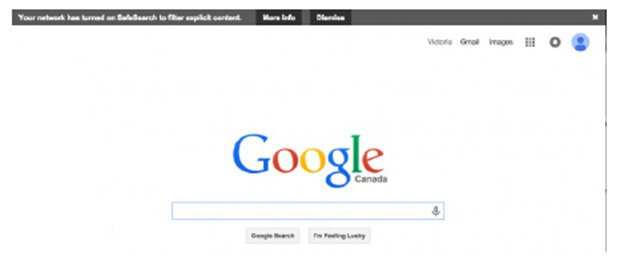- Support Forum
- Knowledge Base
- Customer Service
- Internal Article Nominations
- FortiGate
- FortiClient
- FortiADC
- FortiAIOps
- FortiAnalyzer
- FortiAP
- FortiAuthenticator
- FortiBridge
- FortiCache
- FortiCare Services
- FortiCarrier
- FortiCASB
- FortiConverter
- FortiCNP
- FortiDAST
- FortiData
- FortiDDoS
- FortiDB
- FortiDNS
- FortiDLP
- FortiDeceptor
- FortiDevice
- FortiDevSec
- FortiDirector
- FortiEdgeCloud
- FortiEDR
- FortiEndpoint
- FortiExtender
- FortiGate Cloud
- FortiGuard
- FortiGuest
- FortiHypervisor
- FortiInsight
- FortiIsolator
- FortiMail
- FortiManager
- FortiMonitor
- FortiNAC
- FortiNAC-F
- FortiNDR (on-premise)
- FortiNDRCloud
- FortiPAM
- FortiPhish
- FortiPortal
- FortiPresence
- FortiProxy
- FortiRecon
- FortiRecorder
- FortiSRA
- FortiSandbox
- FortiSASE
- FortiSASE Sovereign
- FortiScan
- FortiSIEM
- FortiSOAR
- FortiSwitch
- FortiTester
- FortiToken
- FortiVoice
- FortiWAN
- FortiWeb
- FortiAppSec Cloud
- Lacework
- Wireless Controller
- RMA Information and Announcements
- FortiCloud Products
- ZTNA
- 4D Documents
- Customer Service
- Community Groups
- Blogs
- Fortinet Community
- Knowledge Base
- FortiGate
- Technical Tip: Configuring SafeSearch for Google, ...
- Subscribe to RSS Feed
- Mark as New
- Mark as Read
- Bookmark
- Subscribe
- Printer Friendly Page
- Report Inappropriate Content
Created on
06-28-2020
12:47 AM
Edited on
11-09-2025
10:45 PM
By
Anthony_E
Description
This article describes the configuration of SafeSearch for Google Bing, etc, search engines.
In some cases, Google does not allow deep inspection and detects it as the man in the middle attack.
Scope
FortiGate has to have an active FortiGuard web filtering license.
Solution
- Enable web filtering: Go to System -> Feature Visibility and make sure that 'Web Filter' is ON. If necessary, apply the changes.

- Block the Adult/Mature Content category and enable Safe Search. Go to Security Profiles -> Web Filter and edit the default profile. Enable FortiGuard Categories. Select the Adult/Mature Content category and set it to 'Block'. Under Search Engines, select 'Enable Safe Search' and 'Search Engine Safe Search – Google, Yahoo!, Bing, Yandex'.


- Add web filtering to the Internet access policy. Go to Policy & Objects -> Policy -> IPv4 and edit the policy that allows connections from the internal network to the Internet. Under 'Security Profiles', enable 'Web Filter' and set it to use the default profile.

- Enforce Google SafeSearch for all traffic. Because Google search often uses the HTTPS protocol, web filtering alone is not able to block all adult/mature content. Two methods can be used to enforce Google SafeSearch for all traffic: using full SSL inspection so that encrypted traffic is fully inspected (which can cause certificate errors), or changing the DNS records to force search traffic to use forcesafesearch.google.com.

To force Google SafeSearch for the entire network, set the DNS entry for www.google.com (and other Google search domains, such as www.google.ca) to be a Canonical Name (CNAME) for forcesafesearch.google.com. This will force all search traffic to use forcesafesearch.google.com.
The method for changing the DNS records using the FortiGate varies, depending on whether the FortiGate is the network’s DNS server or an external server is used.
Go to System -> Config -> Features and select 'Show More'. Make sure that the DNS Database is ON. If necessary, apply the changes.

edit internal
set mode recursive
end
Set the 'DNS Zone' to Google, 'Domain Name' to google.com, and disable Authoritative.



A list of Google search domains can be found on PDF attached named as Google_SafeSearch_DNS_Database.pdf
Using this method will make the FortiGate intercept all DNS queries.
Because all DNS traffic will be forwarded to the FortiGate internal DNS Service, there is a performance impact on the FortiGate.
Go to System -> Config -> Features and select 'Show More'. Make sure that the DNS Database is ON. If necessary, apply the changes.

Set the 'Type' to 'Loopback Interface' and assign an IP/Network Mask (in the example, 10.10.10.10/255.255.255.255).

config system dns-server
edit dns-loopback
set mode recursive
end
Under 'DNS Database', select 'Create New'.
Set 'Type' to 'Address (A)', set 'Hostname' to 'www', and 'IP Address' to '216.239.38.120' (the IP address of forcesafesearch.google.com).

config system dns-database
config system dns-database
Set 'src-filter' to the IP range of the internal users (in the example, 10.10.80.2-10.10.80.100), 'extintf' to the internal interface, and 'mappedip' to the IP address of the loopback interface. Make sure to use the command 'set arp-reply disable' and 'set type load-balance'.
config firewall vip
edit "dns-vip"
set type load-balance
set src-filter "10.10.80.2-10.10.80.100"
set extip 0.0.0.0-239.255.255.255
set extintf port2
set portforward enable
set mappedip "10.10.10.10"
set protocol udp
set extport 53
set mappedport 53
set arp-reply disable
end

Go to Policy & Objects -> Policy -> IPv4 and create a policy to use the virtual IP to intercept DNS queries.
Set the 'Incoming Interface' to the 'internal interface', the 'Outgoing Interface' to the 'loopback interface', the 'Destination Address' to the 'virtual IP', and the 'Service' to' DNS'. Make sure NAT is disabled.


- If full SSL inspection is used, go to google.com and attempt to search for adult/mature content. When the results are shown, a message appears stating that SafeSearch is turned on. This cannot be undone.
- If Google Chrome for internet browsing is used, disable SPDY protocol for SafeSearch to turn on automatically.
- If the DNS settings are altered, go to google.com. A message at the top of the page states that the network has turned on SafeSearch.

The Fortinet Security Fabric brings together the concepts of convergence and consolidation to provide comprehensive cybersecurity protection for all users, devices, and applications and across all network edges.
Copyright 2025 Fortinet, Inc. All Rights Reserved.




